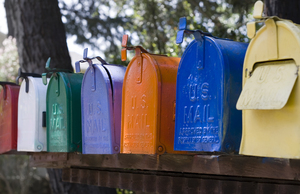When I was growing up, we always had a lush garden in the backyard. My mother has the greenest thumb I’ve ever seen, and now that I have my own family and home, I want to carry on the backyard tradition with my own children. However, with a yard the size of a postage stamp, I have to be strategic in my use of space; I want to garden, but still need to leave most of the grassy area for my kids and our dogs to play on.
I decided to start with a few large pots on the patio with vegetables and herbs. Since I wasn’t sure what would grow well in pots, I started small, with a few herbs, and tomatoes. The more I was successful at growing anything, the more I wanted to try something else. Today, I have 17 pots and 2 hanging planters as the start of my garden, and have since added three raised-bed boxes, in addition to using nearly all the rest of the available (non-grassy, play area) space in the yard.
What Grows Well In Pots
Nearly everything I have ever grown has done well in a pot. In some cases, as with mint, it is better to grow them in a pot, as they may otherwise take over the entire yard. So far, I have been able to grow:
Herbs:
- Parsley
- Sage
- Thyme (regular, Lemon Thyme, Pizza Thyme)
- Mint (Spearmint & Peppermint)
- Oregano
- Tarragon
- Stevia
- Basil (Italian, Greek, Purple)
- Chives
The only reason Rosemary isn’t on the list is because it grows everywhere in the Southern California desert climate, and is already part of my landscaping. I assume that it would do just as well in a pot.
Fruits/Vegetables:
- Strawberries
- Tomatoes
- Cucumber
- Patty Pan Squash (this is the one that looks like UFOs)
- Zucchini
- Bell Peppers
- Jalapeno Peppers
- Serrano Peppers
- Onions
Care and Feeding of the Pot Garden
For any garden to be successful, it should be set up properly, and maintained. To set up your garden, you will need:
Pots: Pots should sized appropriately for what you intend to grow. Herbs tend to fill up whatever size pot you choose, so you may want to decide how much you want to grow. I often start with an 8-10 inch pot at first, and then try something larger the next year if it does well. My favorite herbs are in larger, 12-18 pots, and most of the vegetables are in 24-inch pots.
Soil: Good soil is an important part of gardening. If you’re just starting out, you’ll want to find a good potting soil mix. If you’re planning a larger garden, you will want to use a more sophisticated blend of soils. I use Mel’s Mix, a blend of compost, peat moss, and vermiculite. This mix is great for potted plants because it provides excellent drainage and prevents the soil from getting compacted, allowing the roots of your plant to spread out easily.
Water: All plants need water, some more than others. If you plan to spend a lot of time tending to your garden, you can plan to water each plant by hand as often as necessary. If you prefer a more self-sustaining garden, you will want to set up an automatic drip system. Mine is connected to our sprinkler system, so the garden is watered along with the lawn. In some cases, strategic placement of pots can take advantage of existing sprinkler spray.
Fertilizer: Although I find that most plants will grow without fertilizer, feeding your plants will help them grow bigger, healthier, and produce more fruit. If you don’t care whether your garden is organic or not, Miracle Grow plant food has always been a favorite. These days, I’m trying to move toward a more organic garden approach; you can find organic fertilizers at your local nursery, and the staff there can tell you exactly what to use for your favorite plants.
Work: Tending to a garden really isn’t that much work, unless it gets very large. I like to take a walk around the garden every morning after breakfast, and then I dedicate more time every weekend to:
- Deep water – Many plants, such as tomatoes, need to be deep-watered. This refers to watering the plant at its deepest root level, and can be accomplished using a soaker hose, or directing water at the base of the plant, not the leaves.
- Fertilize – Apply fertilizer according to the directions on the product you have purchased.
- Weed – Mel’s mix is great at inhibiting weeds, and the soil will remain loose enough for them to pull up easily if any do grow.
- Prune – Herbs should be pruned (cut back) to keep them from getting “twiggy,” and basil or oregano flowers should be pinched off to promote continued growth. Tomatoes also need trimming, as new shoots come up between existing branches.
- Pest control – I check for caterpillars and other controllable pests. If necessary, use an organic pest control product.
- Harvest, cook (if necessary), and eat!
It isn’t difficult to start and maintain a patio garden, and the effort is well-worth the beauty and food that it provides.




